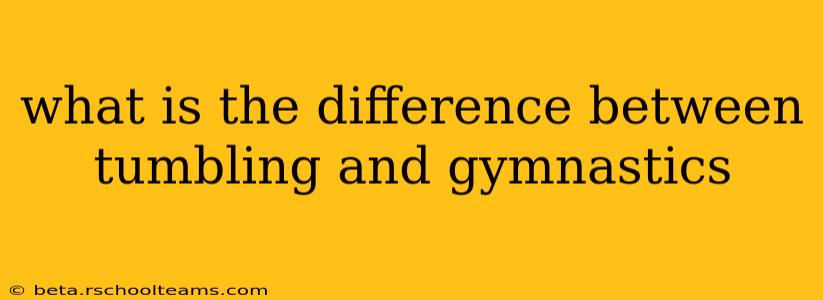What's the Difference Between Tumbling and Gymnastics?
While tumbling is a key component of gymnastics, the two are not interchangeable. Understanding the distinction lies in recognizing the scope and goals of each discipline. This article will clarify the differences, answering common questions along the way.
Tumbling: At its core, tumbling focuses solely on the acrobatic skills performed on the floor. Think forward rolls, back handsprings, cartwheels, and more advanced moves like back tucks, full twists, and aerials. It's a concentrated practice of power, agility, and control in a linear progression along the floor. Tumbling can be a sport in its own right, with competitions focusing solely on the execution and difficulty of these acrobatic sequences.
Gymnastics: Gymnastics, on the other hand, is a much broader sport encompassing several disciplines:
- Artistic Gymnastics: This is the most widely known form, involving events like floor exercise (which includes tumbling), vault, uneven bars, and balance beam. Gymnasts demonstrate strength, flexibility, coordination, and balance across various apparatus.
- Rhythmic Gymnastics: This discipline features routines performed with apparatus like hoops, balls, clubs, and ribbons, emphasizing grace, flexibility, and artistry.
- Trampoline Gymnastics: This involves performing acrobatic skills on a trampoline, requiring precise timing and control.
Therefore, tumbling is a part of artistic gymnastics, specifically the floor exercise routine. However, gymnastics encompasses a much wider array of skills and disciplines beyond just tumbling.
What are the different levels of tumbling?
Tumbling skills are often categorized by increasing difficulty. Beginners start with basic movements like forward and backward rolls, progressing to cartwheels, handsprings, and eventually more complex skills like back tucks, twists, and layouts. The progression is determined by the gymnast's strength, flexibility, and coordination. These levels aren't universally standardized across all tumbling programs, but generally follow a logical progression of increasing difficulty and risk.
Is tumbling harder than gymnastics?
This is a subjective question. While tumbling demands significant strength, power, and precise technique, gymnastics requires a broader skillset. Gymnastics involves mastering multiple apparatus, each with its unique challenges regarding balance, coordination, and strength. A gymnast needs to be proficient in all four (or six, for men) events, while a tumbler specializes in floor skills. So, determining which is "harder" depends on individual strengths and preferences. A naturally powerful and agile person might find tumbling easier than the multifaceted demands of gymnastics.
What are the benefits of tumbling?
Tumbling offers numerous benefits, including:
- Improved coordination and balance: Performing tumbling skills enhances spatial awareness and body control.
- Increased strength and flexibility: Tumbling requires significant strength and flexibility to execute moves safely and effectively.
- Enhanced cardiovascular fitness: The dynamic nature of tumbling improves cardiovascular health.
- Boosted self-confidence: Mastering challenging tumbling skills builds self-esteem and confidence.
- Development of discipline and focus: Tumbling requires dedication, practice, and a focused mindset.
Can you be a tumbler without being a gymnast?
Yes, absolutely. Many individuals participate in tumbling as a stand-alone activity or as part of cheerleading or other sports. Tumbling is a skill that can be developed and enjoyed independently of full-fledged gymnastics training.
In conclusion, while tumbling is an integral component of gymnastics, particularly in floor exercise, it is distinct in its focus and scope. Gymnastics represents a broader range of disciplines and requires a more diverse set of skills and abilities. Choosing between tumbling and gymnastics depends on individual interests and goals.
